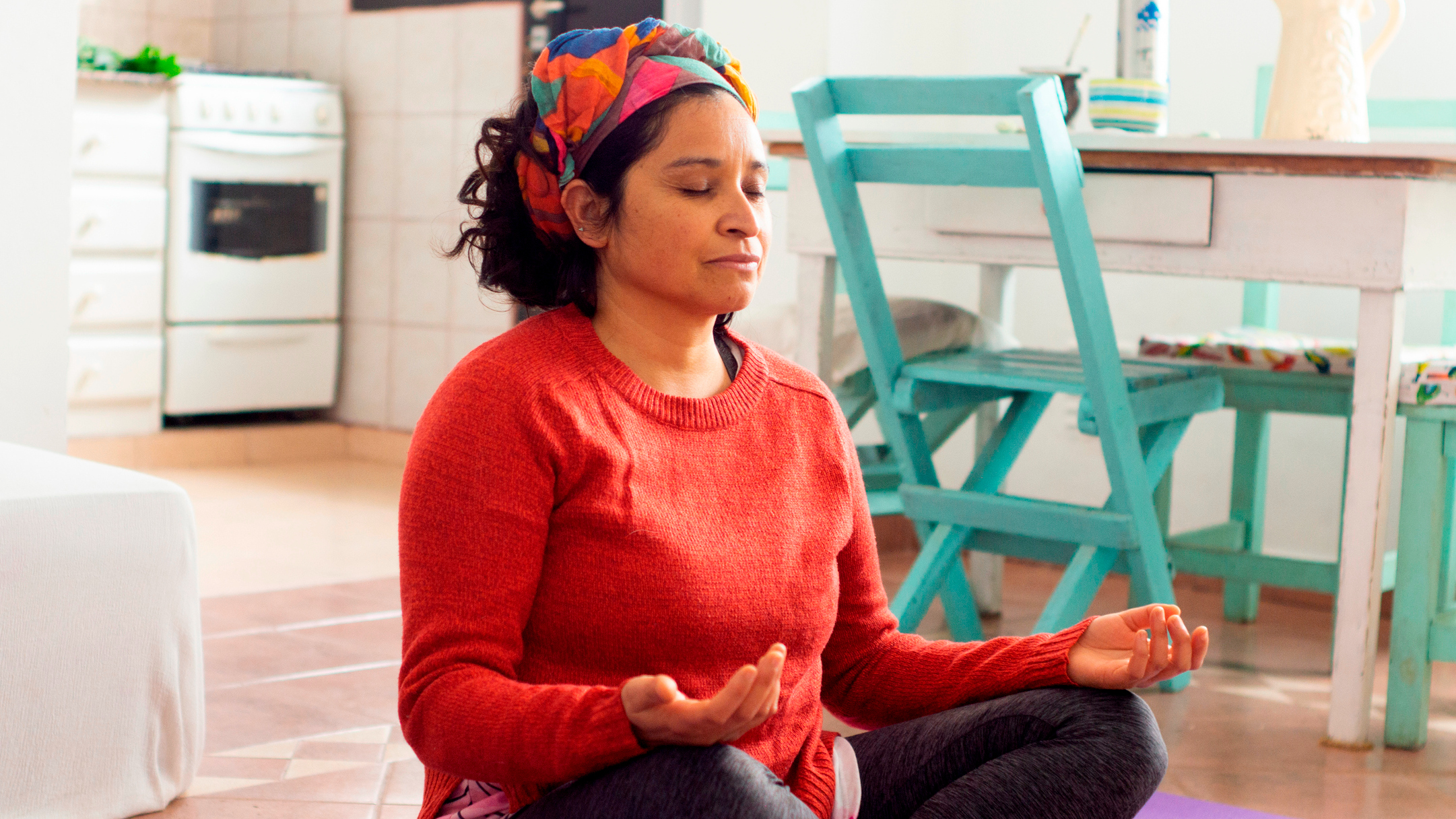Four Restorative Yoga Poses For When You're Completely Exhausted
When burnout threatens, try this restful yoga sequence

Some days it can all feel like too much. When you’re not sleeping well, whether that’s because of stress, taking on too much, or a young baby or sick child keeping you up, things can feel even worse.
Recognizing that you need to slow down and seek rest is key, especially if you’re trying to avoid burnout. Even if a solid eight hours of sleep is unlikely, making time for a short spell of relaxation can make a world of difference. Yoga teacher Naomi Annand recommends this sequence of restorative yoga poses for anyone feeling exhausted.
Taking a moment to acknowledge your exhaustion and commit to a sequence like this can help send positive messages to your nervous system. “Often we’re just masking the tiredness, we’re pushing through,” says Annand. “So by actually lying down, it feels like your body immediately says, ‘Thank you. You’re listening.’ Then maybe you can start to respond to that.”
Restorative Yoga Poses
Spend three to 10 minutes in each pose.
1 Supported Savasana
You’ll need a bolster (if you don’t have one you can use cushions or a couple of rolled-up blankets). Place the bolster on your mat and lie back over it so your chest is raised and your bottom rests on the mat. You can tuck an extra blanket or cushion under your head. Open your arms wide, turn your palms up and feel your chest opening up.
2 Simple side rest
Place a folded blanket across your mat and lie on your right side over it, so it supports your ribs. Extend your right arm forward so it rests on the floor and place your left hand on your left ribs. Breathe into your hand, feeling your ribs expand. After three to 10 minutes, switch to the other side.
3 Reclined bound angle pose
Lie on your back on the mat with your feet together and knees bent. Allow your knees to fall apart and rest your thighs on a bolster or cushions so your hip flexors are relaxed and not contracting. Spread your arms wide, in a T shape with palms facing up. Here you can fully let go. If you wish, place a blanket over your abdomen for extra comfort.
Sign up for workout ideas, training advice, reviews of the latest gear and more.
4 Seated meditation
Sit with your legs crossed—sometimes sitting on a block can be helpful to get more comfortable, or you can lie down if you prefer. “Take a deep breath and try to connect with the feeling of your body,” says Annand. “Listen as it gurgles, bubbles, creaks and pops. This practice is about paying attention to the subtle sensations. Focus on them and away from big narrative-led thought.”
Become aware of how your body connects with the ground and notice the details. Tell yourself, “May I be well as I am. May I be content in this moment.” Stay here for three to 10 minutes. As you move on with your day, try to keep the essence of this meditation in mind, noticing sensations and moving slowly and deliberately.
This sequence appears in Yoga For Motherhood by Naomi Annand, published by Bloomsbury.

Camilla Artault is a writer and keen runner. She has covered women’s running gear – testing leggings, jackets, running bras, tops and shorts – for Coach since 2018, as well as interviewing experts and writing about a range of health and lifestyle topics.
